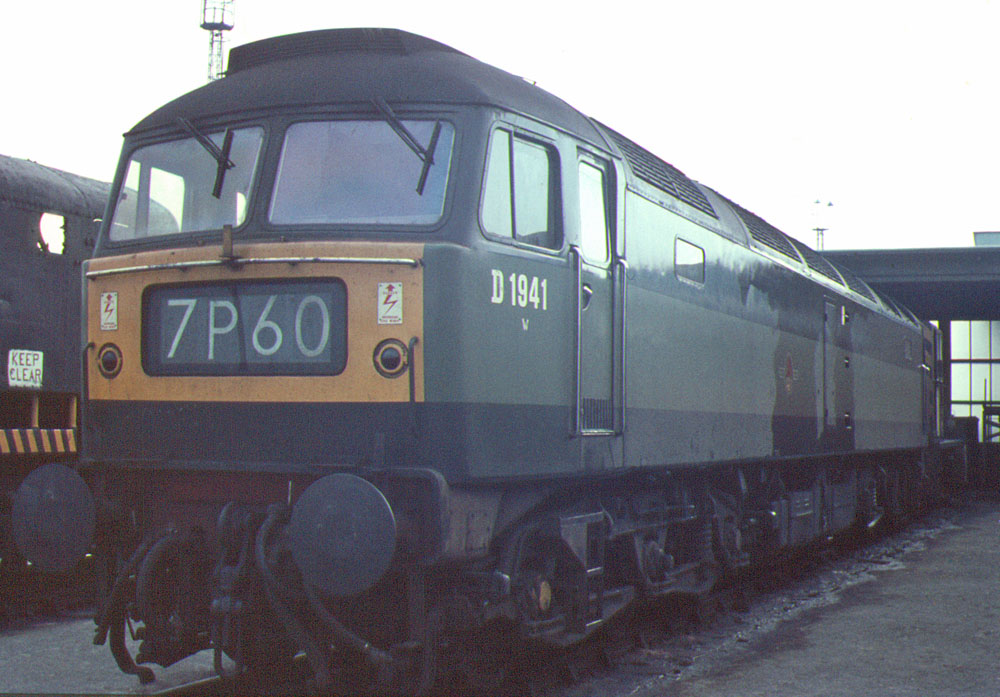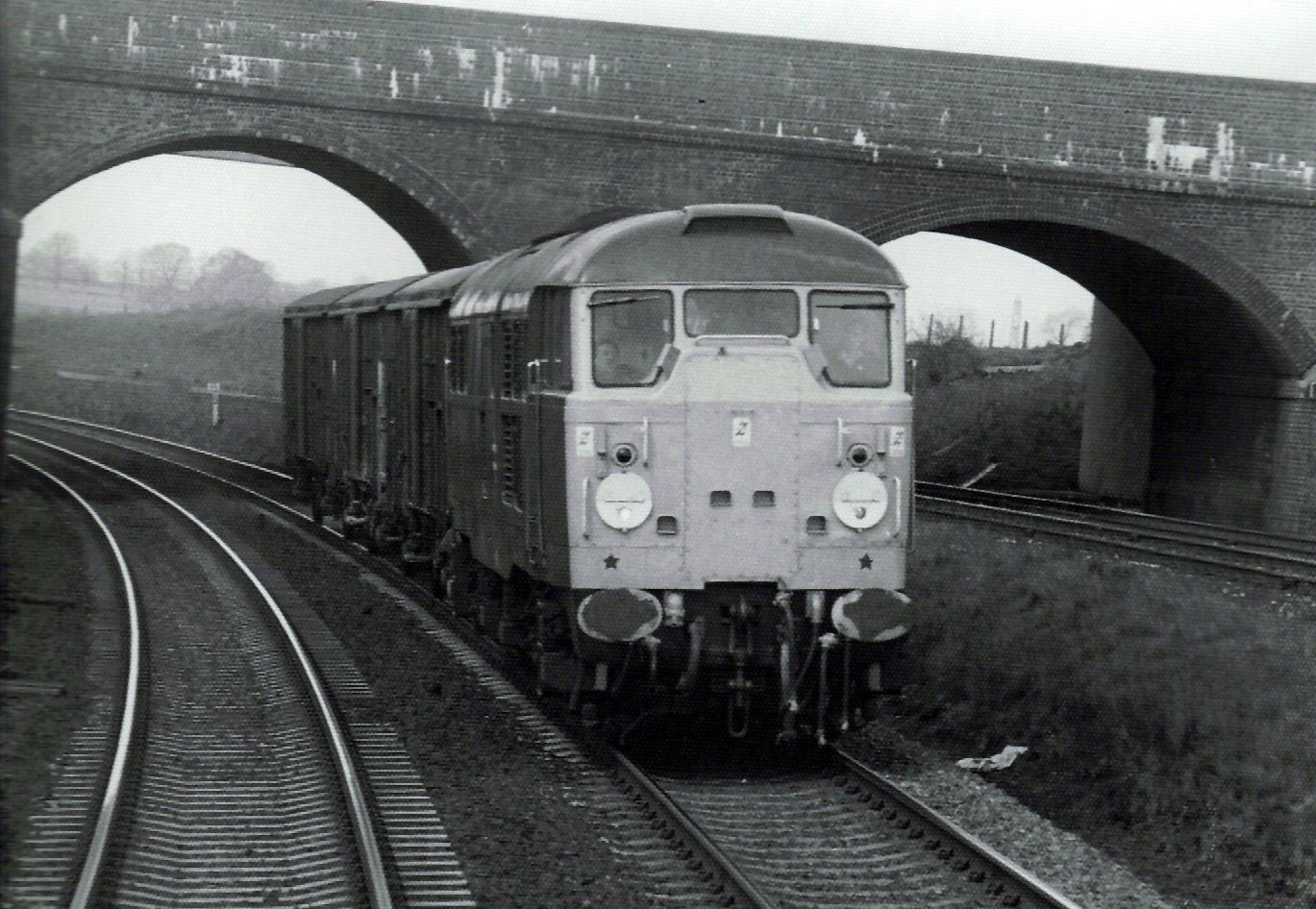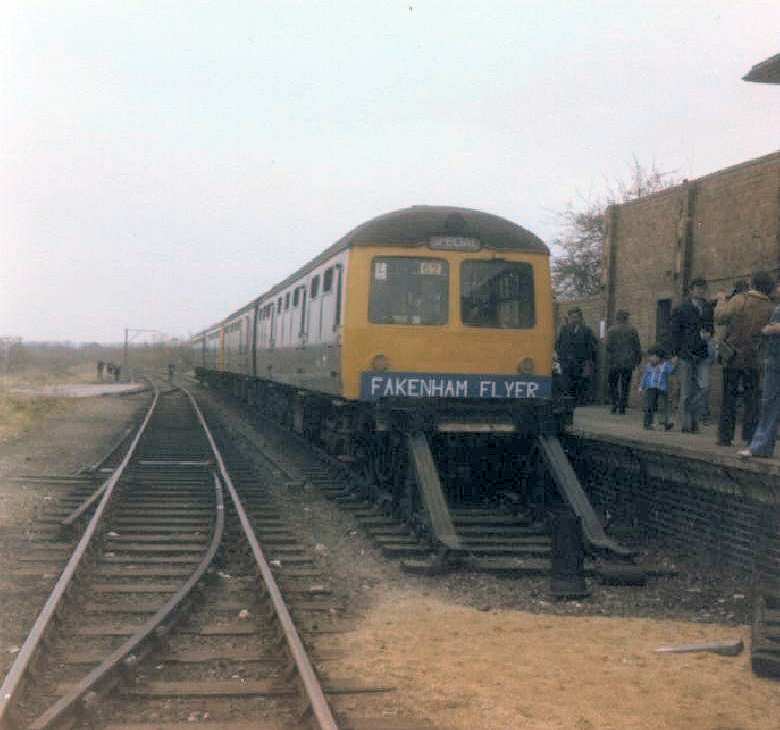|
Botanic Gardens TMD
Botanic Gardens TMD is a traction maintenance depot in Kingston upon Hull in Yorkshire, England. As built it was one of the principal steam engine sheds in the Hull area, Botanic Gardens was the one closest to the main Hull Paragon station and its locomotives were responsible for working passenger services in the area. This entry also covers the engine sheds in the Paragon area that preceded Botanic Gardens. Earlier engine sheds (1848–1901) Paragon station opened in May 1848 replacing an earlier terminus at Manor House although this continued as a railway station until 1854. This station had workshops and an engine shed belonging to the Hull and Selby Railway. The new station at Paragon was provided with a three road engine shed with each road being approximately 125 feet long. A 45-foot diameter turntable was provided to enable arriving locomotives to be turned. These facilities were located on the north side of the station. By the late 1850s the shed was struggling to cope ... [...More Info...] [...Related Items...] OR: [Wikipedia] [Google] [Baidu] |
Kingston Upon Hull
Kingston upon Hull, usually shortened to Hull, is a historic maritime city and unitary authorities of England, unitary authority area in the East Riding of Yorkshire, England. It lies upon the River Hull at its confluence with the Humber Estuary, inland from the North Sea. It is a tightly bounded city which excludes the majority of its suburbs, with a population of (), it is the fourth-largest city in the Yorkshire and the Humber region. The built-up area has a population of 436,300. Hull has more than 800 years of seafaring history and is known as Yorkshire's maritime city. The town of Wyke on Hull was founded late in the 12th century by the monks of Meaux Abbey as a port from which to export their wool. Renamed ''Kings-town upon Hull'' in 1299, Hull had been a market town, military supply port, trading centre, fishing and whaling centre and industrial metropolis. Hull was an early theatre of battle in the First English Civil War, English Civil Wars. Its 18th-century ... [...More Info...] [...Related Items...] OR: [Wikipedia] [Google] [Baidu] |
South Devon Railway (heritage Railway)
The South Devon Railway (SDR) is a heritage railway from Totnes to Buckfastleigh in Devon. Mostly running alongside the River Dart, it was initially known as the Dart Valley Railway. The railway is now operated by the South Devon Railway Trust, a charitable organisation, registered charity. The railway's headquarters and museum are located at Buckfastleigh railway station. History A railway between Newton Abbot and Ashburton, Devon, Ashburton received Parliamentary approval and Royal Assent in 1848. However, with the economy in recession the scheme failed to find sufficient backing. After the Parliamentary approval of construction of the South Devon Railway Company (SDR) from Exeter to Plymouth, a new Buckfastleigh, Totnes and South Devon Railway scheme was proposed to make a junction with the SDR at Totnes and link it with Buckfastleigh, running alongside the River Dart. It opened as a broad gauge line through to on 1 May 1872 and was operated from the outset by the SDR (whi ... [...More Info...] [...Related Items...] OR: [Wikipedia] [Google] [Baidu] |
British Rail Class 47
The British Rail Class 47 or Brush Type 4 is a class of diesel-electric locomotive that was developed in the 1960s by Brush Traction. A total of 512 Class 47s were built at Brush's Falcon Works in Loughborough and at British Railways' Crewe Works between 1962 and 1968, which made them the most numerous class of British mainline diesel locomotive. They were fitted with the Sulzer (manufacturer), Sulzer 12LDA28C U engine, twin-bank twelve-cylinder unit producing though this was later derated to to improve reliabilityand have been used on both passenger and freight trains on Britain's railways for over 55 years. Despite the introduction of more modern types of traction, a significant number are still in use, both on the mainline and on heritage railways. , 76 locomotives still exist as Class 47s, including 32 which have been preserved. 31 locomotives, including six which are preserved, retain mainline running certificates. A further 33 locomotives were converted to British Rail ... [...More Info...] [...Related Items...] OR: [Wikipedia] [Google] [Baidu] |
British Rail Class 37
The British Rail Class 37 is a Diesel locomotive, diesel–electric locomotive. Also known as the English Electric Type 3, the class was ordered as part of the British Rail Modernisation Plan, British Rail modernisation plan. They were numbered in two series, D6600–D6608 and D6700–D6999. The Class 37 became a familiar sight on many parts of the British Rail network, in particular forming the main motive power for InterCity (British Rail), InterCity services in East Anglia and within Scotland. They also performed well on secondary and inter-regional services for many years. Many are still in use today on freight, maintenance, and empty stock movement duties. The Class 37s are known to some railway enthusiasts as "tractors", a nickname given due to the similarities between the sound of the Class 37's engine and that of a tractor. Description Background As part of the large scale dieselisation brought about by the History of rail transport in Great Britain 1948 - 1994#T ... [...More Info...] [...Related Items...] OR: [Wikipedia] [Google] [Baidu] |
British Rail Class 31
The British Rail Class 31 diesel locomotives, also known as the Brush Type 2 and previously as Class 30, were built by Brush Traction from 1957 to 1962. They were numbered in two series, D5500-D5699 and D5800-D5862. Construction of the first locomotive was completed in the final week of September 1957, and the handing-over took place on 31 October. The first Class 31 entered service in November 1957, after the launch of the British Rail Class 20, Class 20 locomotive and was one of the Pilot Scheme locomotives ordered by British Railways to replace steam traction. Engines They were originally built with Mirrlees Blackstone, Mirrlees JVS12T (D5500–D5519) and engines and Brush electrical equipment, but the engines were not successful and in 1964 D5677 was fitted with an English Electric 12SVT engine (similar to the 12CSVT used in the British Rail Class 37, Class 37 but without an intercooler) rated at . The trial proved successful, and between 1965 and 1969 the entire class was ... [...More Info...] [...Related Items...] OR: [Wikipedia] [Google] [Baidu] |
British Rail Class 08
The British Rail Class 08 is a class of diesel–electric shunting locomotives built by British Railways (BR). As the standard BR general-purpose diesel shunter, the class became a familiar sight at major stations and freight yards. Since their introduction in 1952, however, the nature of rail traffic in Britain has changed considerably. Freight trains are now mostly fixed rakes of wagons, and passenger trains are mostly multiple units or have driving van trailers, neither requiring the attention of a shunting locomotive. Consequently, a large proportion of the class has been withdrawn from mainline use and stored, scrapped, exported or sold to industrial or heritage railways. As of 2020, around 100 locomotives remained working on industrial sidings and on the main British railway network. On heritage railways, they have become particularly common, appearing on many of the preserved standard-gauge lines in Britain, with over 80 preserved, including the first one built. ''wn ... [...More Info...] [...Related Items...] OR: [Wikipedia] [Google] [Baidu] |
British Rail Class 124
The British Rail Class 124 diesel multiple units were built by BR Swindon Works in 1960. Operational history The Class 124 was a class of initially six-car diesel multiple units used and built specifically for the trans-Pennine route. In the late 1970s, the class was merged with their Class 123 cousins that had been relocated from Reading services on the Western Region and, towards the end of their days, ran as 4-car hybrid sets. They were all withdrawn in 1984 when their duties were taken over by Class 31/4 diesel-electric locomotive-hauled rakes of four coaches. Nine 2-car sets composed of a class 123 DMBSL and class 124 DMC were formed at Hull in 1984 in case introduction of the class 141 'Pacer' units was delayed, but they were never used in service. The North Yorkshire Moors Railway had the idea of preserving at least one driving unit, due to the cab windows allowing panoramic views, but the plan was scrapped when it was found that the cost of removing the asbesto ... [...More Info...] [...Related Items...] OR: [Wikipedia] [Google] [Baidu] |
British Rail Class 108
The British Rail Class 108 diesel multiple units were built by BR Derby from 1958 to 1961, with a final production quantity of 333 vehicles. Overview The 108 was formed as a 2-, 3-, or 4-car unit. Its aluminium body led the type to be classed as a lightweight unit. These units stayed in regular service until 1990, when they began to be withdrawn from traffic. They were replaced on regional services by the new '' Sprinter'' derivative units, or by ''Turbo'' units on services around London. The final units lasted in traffic until October 1993, although many saw further use in departmental service, as sandite or route-learner units. Good condition on withdrawal and lack of asbestos have ensured that many of this class are now used on preserved railway lines. Orders Accidents and incidents *On 19 October 1987, after the Glanrhyd Bridge over the River Towy at Llandeilo, Carmarthenshire, was washed away by floodwater, a passenger train operated by a Class 108 unit fell into ... [...More Info...] [...Related Items...] OR: [Wikipedia] [Google] [Baidu] |
British Rail Class 101
The British Rail Classes 101 and 102 diesel-mechanical multiple units were built by Metro-Cammell at Washwood Heath in Birmingham, England, from 1956 to 1959, following construction of a series of prototype units. These classes proved to be some of the most successful and longest-lived of BR's ''First Generation'' DMUs, second in longevity only to the Class 121, with the final five units being withdrawn on 24 December 2003. The oldest set was, by then, just over 47 years old. Background In 1955, British Rail published a Modernisation Plan to streamline the railway network, bringing it up to date in comparison to European standards. Steam power would be phased out in favour of diesel powered railcars and locomotives, and projects were put out to tender. BR hoped that by replacing steam with DMUs, costs would be reduced sufficiently to make rural lines viable. Since there was no time for BR to issue a standard specification, train builders were invited to submit plans on the ... [...More Info...] [...Related Items...] OR: [Wikipedia] [Google] [Baidu] |
British Rail Class 105
The British Rail Classes 105 and 106 diesel multiple units were built by Cravens, Cravens Ltd. of Sheffield from 1956 to 1959. The class were built with a side profile identical to British Railways Mark 1 carriage stock, using the same doors and windows. None were selected for refurbishment. The last passenger car was withdrawn from service in 1988. Originally AEC engined vehicles were class 105 and Leyland engined vehicles were class 106, but in the late 1970s they all became class 105s. Usage The Class 105 DMUs were used chiefly on Eastern Region of British Railways, Eastern Region services around Hull, Lincolnshire, East Anglia and local services to/from . Units initially designated to work on the former Midland and Great Northern Joint Railway lines were moved to services from London King's Cross upon the closure of the M&GN joint lines in 1959. Units were also used on the London Midland Region of British Railways, London Midland Region and in Scottish Region of British ... [...More Info...] [...Related Items...] OR: [Wikipedia] [Google] [Baidu] |
Regional Railways
Regional Railways was one of the three passenger sectors of British Rail created in 1982 that existed until 1997, two years after Privatisation of British Rail. The sector was originally called ''Provincial''. Regional Railways was the most subsidised (per passenger km) of the three sectors. Upon formation, its costs were four times its revenue. The sector was broken up into eight franchises during the privatisation of British Rail and ceased to exist on 31 March 1997. Formation Upon sectorisation in 1982, three passenger sectors were created: InterCity, operating principal express services; London & South East (renamed Network SouthEast in 1986) operating commuter services in the London area, and Provincial (renamed Regional Railways in 1989) responsible for all other passenger services. In the metropolitan counties, local services were managed by the Passenger Transport Executives. Services Regional Railways inherited a diverse range of routes, comprising both express and ... [...More Info...] [...Related Items...] OR: [Wikipedia] [Google] [Baidu] |
British Rail Class 03
The British Rail Class 03 locomotive was, together with the similar , one of British Railways' most successful 0-6-0 diesel-mechanical shunters. 230 were built at Doncaster Works, Doncaster and Swindon Works, Swindon works between 1957 and 1962, and were numbered D2000–D2199 and D2370–D2399 (later 03004 to 03399). D2370 and D2371 were used as departmental locomotives and originally numbered 91 and 92 respectively. Overview The fleet of 230 locomotives entered service between December 1957 and June 1962. Like other shunters of this size, the Class 03 was built for light duties where a larger locomotive was not needed, especially for shunting at locomotive and carriage depots and as station pilots, or where larger or heavier locomotives could not be used. The reduction over time in the demand for shunting locomotives meant that they were progressively withdrawn from 1968 onwards, many being sold to private industry, including three that were exported to Belgium. However, some r ... [...More Info...] [...Related Items...] OR: [Wikipedia] [Google] [Baidu] |








